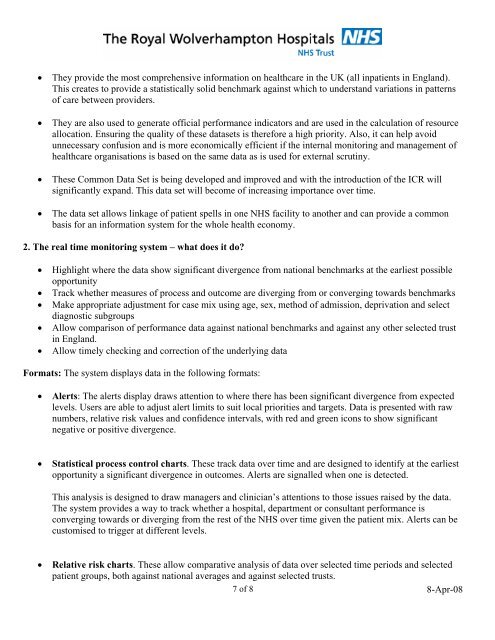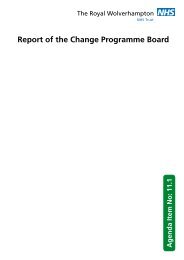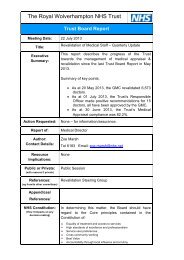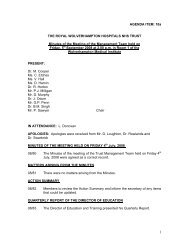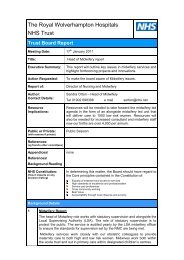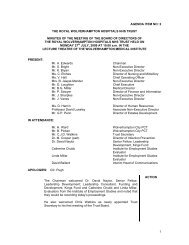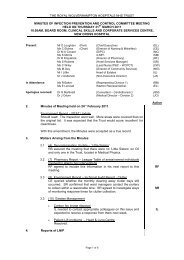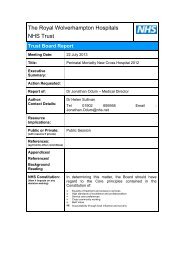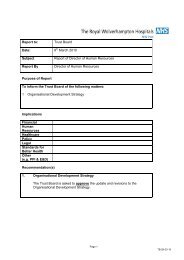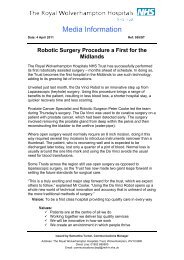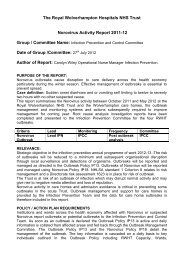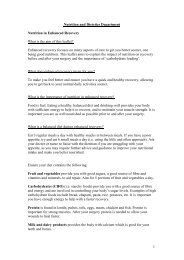Clinical Outcome Report - The Royal Wolverhampton Hospitals NHS ...
Clinical Outcome Report - The Royal Wolverhampton Hospitals NHS ...
Clinical Outcome Report - The Royal Wolverhampton Hospitals NHS ...
Create successful ePaper yourself
Turn your PDF publications into a flip-book with our unique Google optimized e-Paper software.
• <strong>The</strong>y provide the most comprehensive information on healthcare in the UK (all inpatients in England).This creates to provide a statistically solid benchmark against which to understand variations in patternsof care between providers.• <strong>The</strong>y are also used to generate official performance indicators and are used in the calculation of resourceallocation. Ensuring the quality of these datasets is therefore a high priority. Also, it can help avoidunnecessary confusion and is more economically efficient if the internal monitoring and management ofhealthcare organisations is based on the same data as is used for external scrutiny.• <strong>The</strong>se Common Data Set is being developed and improved and with the introduction of the ICR willsignificantly expand. This data set will become of increasing importance over time.• <strong>The</strong> data set allows linkage of patient spells in one <strong>NHS</strong> facility to another and can provide a commonbasis for an information system for the whole health economy.2. <strong>The</strong> real time monitoring system – what does it do?• Highlight where the data show significant divergence from national benchmarks at the earliest possibleopportunity• Track whether measures of process and outcome are diverging from or converging towards benchmarks• Make appropriate adjustment for case mix using age, sex, method of admission, deprivation and selectdiagnostic subgroups• Allow comparison of performance data against national benchmarks and against any other selected trustin England.• Allow timely checking and correction of the underlying dataFormats: <strong>The</strong> system displays data in the following formats:• Alerts: <strong>The</strong> alerts display draws attention to where there has been significant divergence from expectedlevels. Users are able to adjust alert limits to suit local priorities and targets. Data is presented with rawnumbers, relative risk values and confidence intervals, with red and green icons to show significantnegative or positive divergence.• Statistical process control charts. <strong>The</strong>se track data over time and are designed to identify at the earliestopportunity a significant divergence in outcomes. Alerts are signalled when one is detected.This analysis is designed to draw managers and clinician’s attentions to those issues raised by the data.<strong>The</strong> system provides a way to track whether a hospital, department or consultant performance isconverging towards or diverging from the rest of the <strong>NHS</strong> over time given the patient mix. Alerts can becustomised to trigger at different levels.• Relative risk charts. <strong>The</strong>se allow comparative analysis of data over selected time periods and selectedpatient groups, both against national averages and against selected trusts.7 of 8 8-Apr-08


